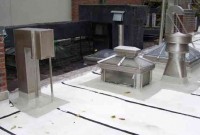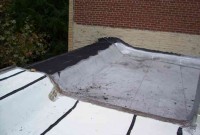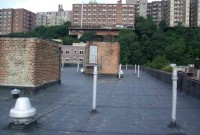LL85/09 NYC Energy Conservation Code
LL85/09 NYC Energy Conservation Code (PDF) establishes a New York City Energy Conservation Code and eliminates a former loophole that permitted no energy efficiency improvements if the renovation applied to less than 50% of a building’s systems.
Overview
Local Law 85 (LL85) requires buildings to meet the most current energy code for any renovation or alteration project. LL85’s requirement is based on a series of local energy laws, collectively called New York City Energy Conservation Code (NYCECC). NYCEEC currently comprises the 2010 Energy Conservation Construction Code of New York State (ECCCNYS), Local Law 85 of 2009, Local Law 48 of 2010 and Local Law 1 of 2011. The NYCECC is expected to be revised again as of July 1, 2013.
Prior to the passage of Local Law 85, the New York State Energy Conservation Construction Code only required buildings to upgrade to current code standards during renovations where more than half of the building’s systems were being replaced. In New York City, nearly all renovations affect less than 50% of the building, and as a result, these projects were not required to upgrade to the most up-to-date standards, therefore foregoing significant efficiency gains. By adopting the NYC Energy Conservation Code (NYCECC), the city will require upgrades to meet code for any renovation or alteration project, instead of those only affecting more than 50% of the building system.
Applicability & Exemptions
All buildings must be in compliance with the NYC Energy Conservation Code at the time of renovation or new construction, except for Historic Buildings and State or National Landmarks, as detailed below.
HISTORIC BUILDINGS:
Buildings listed in the State or National Register of Historic Places OR designated as a historic property under state law OR as a contributing resource for a Historic District on the National Register OR with an opinion from the State Historic Preservation Officer or Keeper of the National Register of Historic Places.
LANDMARKS:
Buildings’ interiors, exteriors and structures designated by the Landmarks Preservation Commission OR scheduled for consideration by the Landmarks Preservation Commission and not otherwise exempt as a Historic Building
Requirements
For all additions, alterations, renovations and repairs to an existing building or building system, the work must meet the current standards of the NYC Energy Conservation Code (NYCECC) at the time of construction.
Unless building energy use is increased as a result, the following building alterations need not comply with this code: storm windows installed over existing fenestration, replacements of glass in an existing sash and frame, construction where the existing roof, wall or floor cavity is not exposed, and existing ceiling, wall or floor cavities exposed during construction if filled with insulation.
 |
 |
 |
| Left: A well insulated white roof will keep tenants warmer in winter and cooler in summer than either a silver roof or a black roof, which contributes to the “Heat Island Effect”. | ||
Timeline
The New York City Energy Conservation Code went into effect July 1, 2010.
Compliance
A professional statement signed by a registered design professional (professional engineer, PE or registered architect, RA) or lead energy professional stating that the plans and specifications as installed are in compliance with the New York City Energy Conservation Code must be filed with the Department of Buildings.
During the initial application for the project, an energy analysis demonstrating the design’s compliance with the NYCECC, along with supporting documentation, must be provided.
Source: www.nyc.gov/dob

